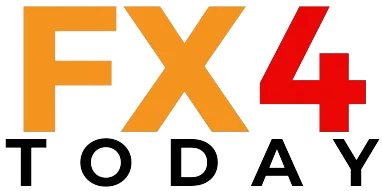Understanding the Importance of News in Forex Trading
In the dynamic world of forex trading, staying attuned to global news is paramount. Various factors such as economic events, political developments, and central bank announcements play a significant role in influencing currency values. For instance, major news events like the Brexit referendum or decisions made by the Federal Reserve on interest rates have historically had profound impacts on the forex market. These events can cause significant volatility, leading to rapid shifts in currency prices.
Market sentiment, which refers to the overall attitude of investors towards a particular market or financial instrument, is often shaped by these news events. Traders utilize news to gauge the direction of the market, making informed decisions based on the latest developments. For example, positive economic reports such as higher-than-expected GDP growth can bolster a currency, while political instability or unexpected policy changes can lead to depreciation.
To navigate this landscape effectively, traders must stay updated with real-time news. Tools such as economic calendars and news feeds are essential for monitoring these updates. Economic calendars provide a schedule of important upcoming events, allowing traders to anticipate potential market movements. News feeds offer instant access to breaking news, enabling traders to react promptly to new information.
The ability to quickly and accurately interpret news is a critical skill for successful forex trading. Traders must not only understand the immediate implications of a news event but also anticipate its longer-term effects on the market. This requires a deep understanding of both the global economy and the specific factors that drive currency values.
In essence, news acts as a catalyst in the forex market, driving price movements and creating opportunities for traders. By staying informed and leveraging the right tools, traders can enhance their decision-making process, ultimately leading to more successful trading outcomes.
Techniques and Tools for Effective Forex Analysis
Forex trading analysis is a critical component for making informed trading decisions in the dynamic foreign exchange market. There are two primary types of analysis that traders employ: fundamental and technical analysis. Each provides unique insights into market behavior and can be used individually or in conjunction for a more holistic approach.
Fundamental analysis involves evaluating economic indicators, monetary policies, and geopolitical events to forecast currency movements. Traders scrutinize economic data such as GDP growth rates, unemployment figures, and inflation rates. Central bank decisions, such as interest rate adjustments and quantitative easing measures, also play a significant role in shaping currency values. Additionally, geopolitical developments, including trade agreements and political stability, can have profound impacts on forex markets. The goal of fundamental analysis is to ascertain the intrinsic value of a currency based on these macroeconomic factors.
In contrast, technical analysis focuses on historical price data and trading volumes to predict future market trends. Traders utilize charts and patterns to identify potential trading opportunities. Key technical indicators include moving averages, which help smooth out price data to identify trends, the Relative Strength Index (RSI), which indicates overbought or oversold conditions, and the Moving Average Convergence Divergence (MACD), which highlights changes in the strength, direction, momentum, and duration of a trend. While technical analysis can provide precise entry and exit points, it does not account for external economic factors influencing the market.
Both fundamental and technical analyses have their advantages and limitations. Fundamental analysis offers a broader economic perspective but may lack the precise timing provided by technical analysis. Conversely, technical analysis can pinpoint optimal trading opportunities but may miss the larger economic context. Many traders find that combining the two approaches yields the best results, allowing them to form a more comprehensive trading strategy.
To aid in their analysis, traders frequently use sophisticated tools and platforms such as MetaTrader, TradingView, and Bloomberg Terminal. MetaTrader offers extensive charting capabilities and automated trading features. TradingView provides advanced charting tools and a social network for traders to share insights. Bloomberg Terminal offers unparalleled access to real-time financial data and news.
In the ever-evolving forex market, continuous learning and adaptability are paramount. As new analytical methods and market conditions emerge, staying informed and flexible can significantly enhance trading success.




